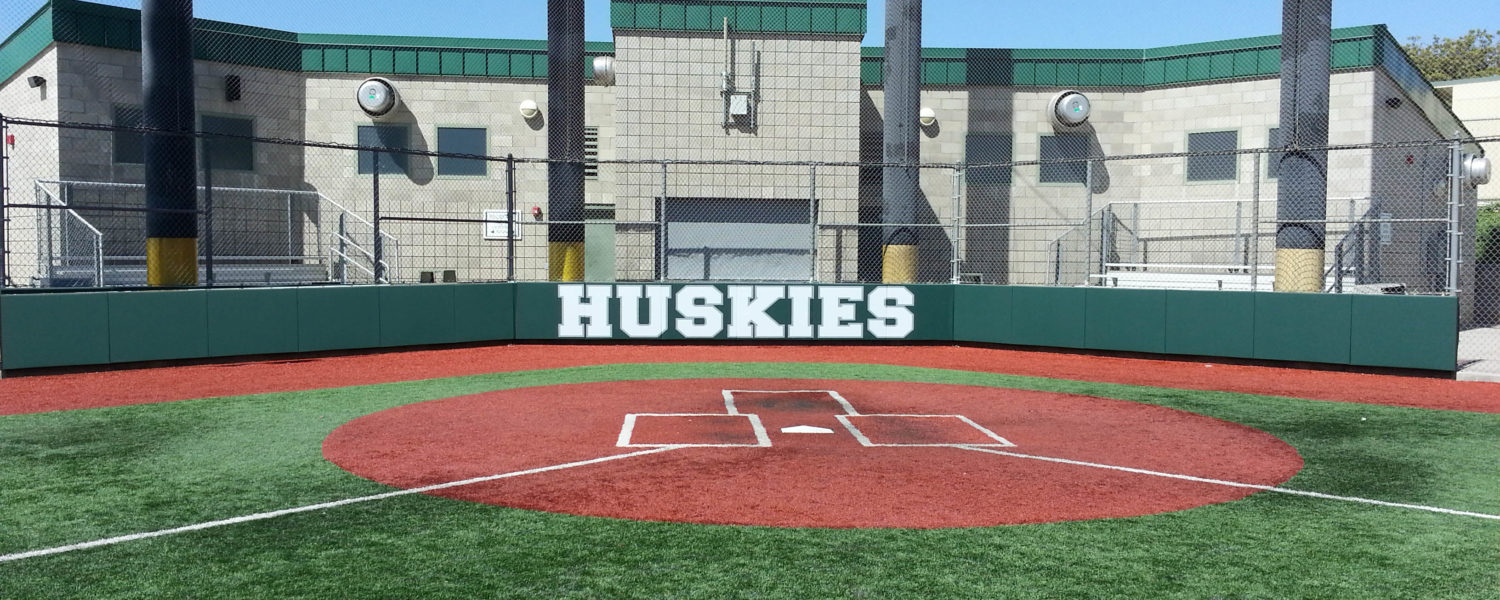By Michelle Robinson
Padding is only as good as the protection it provides. When vinyl and foam are subjected to varying temperatures, extreme weather conditions, areas of activity, or the passage of time, they are subject to wear and tear.
Under these circumstances, padding may tear, separate, sag, or deteriorate. Even constant impact can affect the longevity of protective padding, especially if the foam quality was poor to begin with.
With this in mind, last season’s post pads may not be in good enough condition to absorb the impact of this season’s player. A physical walk-through and thorough visual inspection of the area will help you determine your padding needs and give you plenty of time to repair, replace, or recover them.
Here are some important points to consider during your inspection.
COMPLIANCE
Is there padding where it is supposed to be? Regulations change annually, so it’s best not to be caught unaware. Does existing wall padding meet ASTM standards for flame spread? Test ratings change and the pads you have had for several years may not meet new standards. Flame retardant Class A wall pads must meet fire codes such as ASTM E-84 and the most recent code, NFPA 701, a standard that establishes test methods to assess the flame spread of various textiles and films under specified fire test conditions.
PLACEMENT
Make sure the padding is high and wide enough to protect all of the players. Look at obstacles and obstructions from every angle, and for every possibility. What will happen if a player slides head first into an obstruction? You don’t want to leave any area, corner, edge, base, gate, door, panel, or other object exposed on or near the field of play. Padding can be engineered to cover objects of any shape, size, and surface.
FOAM
Is the foam thick enough to absorb the impact of the activity around it? Thickness matters when it comes to impact resistance. Make sure your padding thickness meets nationally accepted safety standards at ASTM.org. The thickness will depend upon the type of foam installed and the physicality of the activity. Foam filler should meet ASTM F1292 standards for impact attenuation, which specifically establishes Head Impact Criteria (HIC) and G-force standards and takes into consideration the distance and speed with which players will hit the wall. Consult with your sports padding manufacturer that have expertise in this area and request test results.
What is the condition of the foam? You won’t know unless you have the tools and the manpower to see what’s going on under the existing vinyl…and most people don’t. If you see powder residue under or around the installation, your foam could be disintegrating beneath the vinyl. A simple way to test foam condition is to press down on the foam to see if it bounces back to its original position. If it remains depressed, it is time to replace it.
VINYL
In what condition is the vinyl covering? Vinyl that is torn, frayed, has threads showing, or decals peeling can scrape the skin upon impact. If the foam is in good shape, then a new printed wrap over the existing cover will suffice and save you money.
CLOSURES
How about the closures on the padding, are they secure? Look for missing grommets, ripped zippers, broken ties, and Velcro that no longer holds, all of which could expose the hard surface below or dislodge the pad upon impact.
MOUNTING SYSTEM
Is the mounting system secure or falling apart? As seasons change, systems are removed and reinstalled. Attachments are often left off or misplaced to the point where the pads are literally hanging by one bolt, instead of secured properly.
Although there are no guarantees when it comes to impact sports, protective padding can significantly reduce the number and severity of injuries, and it is especially effective in reducing injuries to the head.
Michelle Robinson is co-founder and senior vice-president of Sports Venue Padding by Artistic Coverings, a diverse manufacturer of sports protective padding and landing mats, www.SportsVenuePadding.com.











